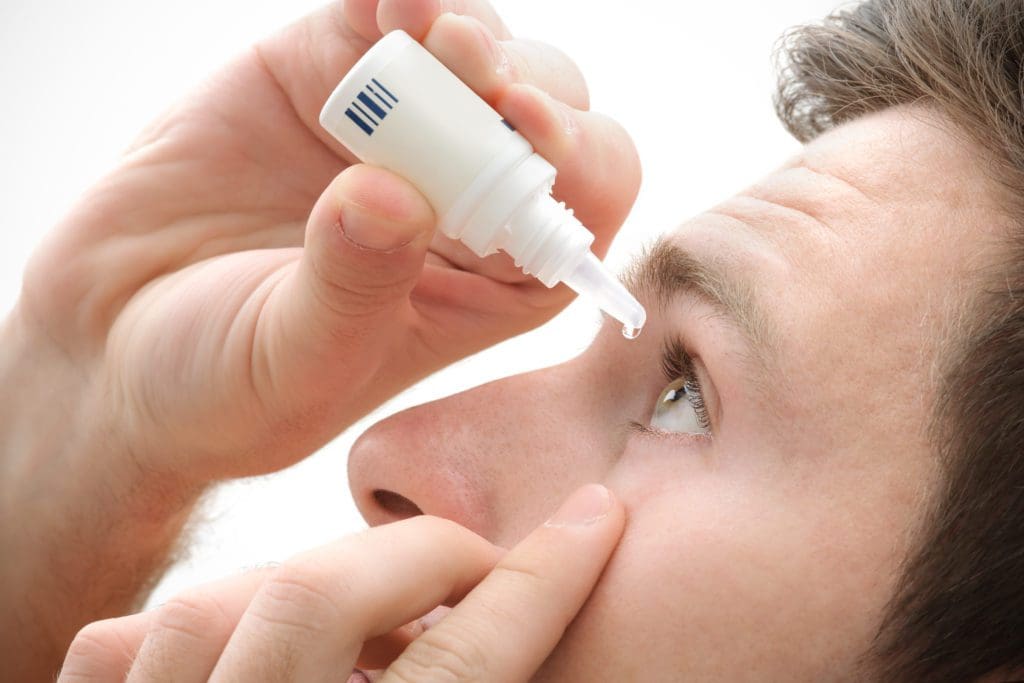
Medically Reviewed by Antoine K. Fahd, M.D., PhD.
Contacts vs. Glasses vs. LASIK for Farsightedness
Home / Farsightedness (Presbyopia) /
Last Updated:

Medically Reviewed by Antoine K. Fahd, M.D., PhD.
Table of Contents
Occurring in both children and adults, the National Eye Institute reports that farsightedness (hyperopia) impacts between 5 and 10 percent of the population in the United States. Hyperopia occurs when light is focused behind the retina. It is often the result of a flat cornea, or too short eyeball, and it causes blurry vision when trying to focus on things up close.
The American Academy of Ophthalmology (AAO) publishes that contact lenses or eyeglasses are the most common treatment methods for hyperopia, but LASIK surgery is an option as well. Contacts are prescription lenses that are placed directly on the eye to correct refractive errors. Eyeglasses for farsightedness may include readers, prescription glasses, or bifocals. Laser-assisted in-situ keratomileusis, or LASIK, is a form of laser eye surgery that permanently reshapes the cornea to correct the refractive error.
Glasses are the least invasive of the three treatment methods for farsightedness, but they can be a pain to deal with, and people often prefer the invisible nature of contacts. Contacts must be replaced at regular intervals and may not be suitable for everyone, however.
LASIK is a surgical procedure that can eliminate the need for corrective eyewear. The FDA reports that the vast majority of people who undergo the procedure are happy with the results.

Contacts for Farsightedness
Contacts are plastic lenses, either hard or soft, that are placed in the eye to correct vision. AAO publishes that rigid gas-permeable (RGP) lens are the most common form of hard contacts, and they hold their shape well while letting oxygen through to the eye. Soft contact lenses can either be daily use or extended wear, which can be kept in for up to a week, even overnight.
Contacts are prescription eyewear that generally can be worn all day. Most forms will need to be removed at night and placed into a solution to clean them. Daily use contacts are often disposable and need to be replaced every day.
Contacts are often preferable to glasses because they are not as visible and can therefore be more aesthetically pleasing. Contacts need to be cared for properly and may not be for everyone. For example, if you are prone to eye infections or dry eyes, or you have difficulties putting things in your eyes, they might not be the best choice.
Presbyopia is form of farsightedness that is related to aging. As the National Eye Institute explains, everyone over the age of 35 is at risk for presbyopia. Presbyopia occurs as the lens of the eye becomes rigid and less flexible due to age, and this can cause farsightedness. It can become difficult for you to see things up close, and things like reading, especially in low-light situations, can cause eye strain and blurry vision.
There are special contacts to treat presbyopia. These include bifocal, or multifocal, contact lenses or monovision lenses. Bifocals use two different prescriptions. They are for people who already suffer from myopia (nearsightedness) and are now struggling with presbyopia as well.

How Glasses Treat Farsightedness
Mild farsightedness (presbyopia) may be fixed with just over-the-counter reading glasses or “readers” that you will only need to use when trying to focus on things up close, like a menu or newspaper. As presbyopia progresses with age, as it can between your mid-40s and mid-60s, farsightedness may become more severe and may require prescription eyeglasses.
Eyeglasses come in many shapes and sizes. Like contacts, they are corrective lenses that are specifically tailored to each person and the particular level of correction needed as determined by a comprehensive eye exam. Just like contacts, prescription glasses for farsightedness or presbyopia may be in the form of bifocals or multifocal lenses to account for both near and far distance vision issues.
Both eyeglasses and contact lenses help to change the way the light is reflected and bent into your retina to account for the refractive error. Typically, eyeglasses correcting for farsightedness are thicker in the middle since they are often correcting for a too-flat cornea and what is called a “plus prescription.” This can give them a kind of “bug eye” or magnified appearance if the prescription is significant.
Treating Farsightedness With LASIK
LASIK is a surgical procedure that can eliminate the need for glasses or contacts, and it provides a permanent change to the eye. LASIK uses laser technology to make a small flap in the epithelial (outer) layer of the cornea and then uses another laser to shape the stroma layer underneath to build up tissue and fix the “flattening” that often causes farsightedness. The flap is replaced after ablation and will grow back on its own.
LASIK is a same-day quick procedure with a relatively fast healing time. The American Refractive Surgery Council publishes that recovery can be as rapid as a day or two after surgery, and generally, you will be seeing better almost immediately. Your eyes need to be stable — that is, the prescription needs to stay the same — for at least a year before getting LASIK surgery, and you must also need to be in good health. Your corneas will also need to be thick enough for the flap to be created. An ophthalmologist will do a comprehensive exam and take precise measurements of the eyes before performing LASIK.
In the case of farsightedness, or presbyopia, monovision LASIK is often used. This is a similar concept to monovision contacts or glasses, but it involves surgically correcting one eye for distance vision and one for close vision, and it will require an adjustment period. Generally, your doctor will have you wear monovision contacts for a period of time first to ensure that you are a good candidate for this procedure.
LASIK is considered an elective procedure, so it is not generally covered by insurance. It is also permanent, and as you age, presbyopia can worsen and cause your prescription to change again. Mayo Clinic warns that you may still require reading glasses later in life even if you get LASIK surgery to correct vision errors.
Pros and Cons of Contacts, Glasses & LASIK for Treating Farsightedness
Farsightedness can be successfully treated with contacts, eyeglasses, or LASIK surgery. There are some pros and cons to each treatment option.
- Eyeglasses and contacts can be changed as your prescription varies. They are not as permanent options as LASIK.
- LASIK is often a one-time procedure that can take away the need for prescription eyewear and the hassles associated with them.
- Prescription eyewear is commonly covered under insurance whereas LASIK surgery is not.
- LASIK can results in savings over time, as it is a one-time cost instead of a recurring one like glasses or contacts.
- Contacts need to be changed every day (or weekly) and taken care of to avoid infections while glasses do not.
- The cost for contacts can be more than glasses over time since you have to replace them more often.
- Glasses are considered low-maintenance and have less risk for infection than contacts since you do not have to touch your eyes to use them.
- Glasses can be easily scratched or broken.
- Contacts are easily lost or misplaced.
- LASIK can cause dry eyes.
- Contacts cover your entire field of vision while glasses do not since they are external; therefore, contacts may give you a better visual experience.
- LASIK can provide clear and focused vision all the time.
- Contacts can be difficult for people with sensitive eyes and take more time to prepare each day and night (putting them in, taking them out, cleaning them) whereas glasses are just wear and go.
- LASIK does not just treat farsightedness but actually corrects it permanently.
LASIK is a surgical and permanent procedure. It should be discussed at length with your doctor so you know what to expect and what your expectations should be ahead of time. While LASIK may not be covered by insurance, there are payment and financing options available. The procedure can actually save you time and money in the long run when compared to glasses or contacts.
You deserve clear vision. We can help.
With 135+ locations and over 2.5 million procedures performed, our board-certified eye surgeons deliver results you can trust. Your journey to better vision starts here.
References
- Facts About Hyperopia. (July 2016). National Eye Institute.
- Farsightedness: Hyperopia Treatment. (March 2014). American Academy of Ophthalmology.

Tony Fahd has been a leader in the refractive and laser cataract surgery industry for over 20 years. He is a respected surgeon known for his excellent care, expertise and superior results.
This content is for informational purposes only. It may have been reviewed by a licensed physician, but is not intended to serve as a substitute for professional medical advice. Always consult your healthcare provider with any health concerns. For more, read our Privacy Policy and Editorial Policy.